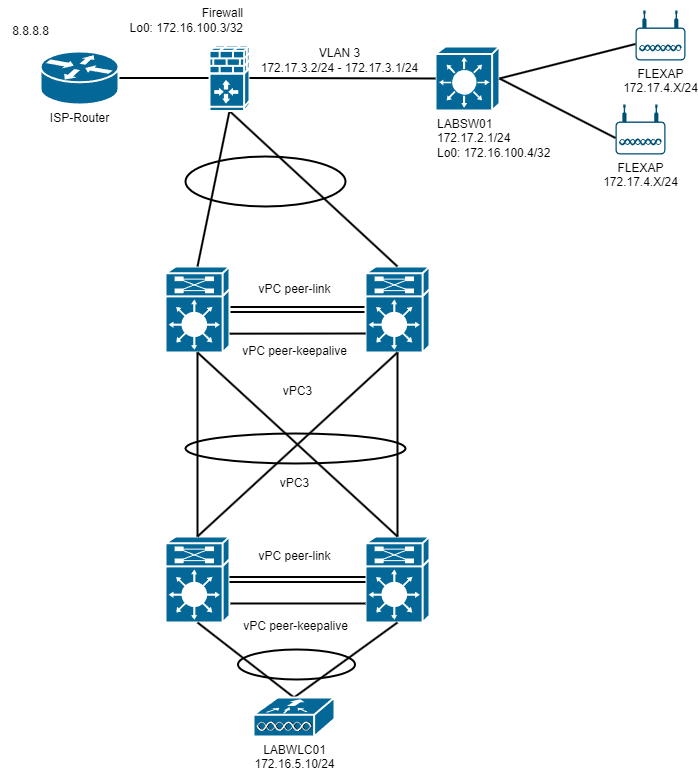Introduction
Cisco AireOS WLC (Wireless LAN Controller) is a wireless network controller that is designed to manage wireless lightweight access points (LAP) in large-scale enterprise wireless networks. It is a software-based controller that can be deployed on a physical appliance or on a virtual machine, and it provides centralized management and control of all the wireless access points in a network. This guide covers the FlexConnect mode (local switching) , which is not active by default. In contrast to autonomous WLAN access points lightweight access points are designed to be controled via a WLAN controller. Some of the key features and capabilities of Cisco AireOS WLC include:

The topology above represents a datacenter site and a small office site where the WLAN access points are located. The WLAN controller is connected inside the datacenter via LAG (port channel) to NEXUS switches (vPC). The Firewall is connected between both sites and routes are exchanged via OSPF. The main focus is on the WLC and the office site where the APs are connected.

0 Comments